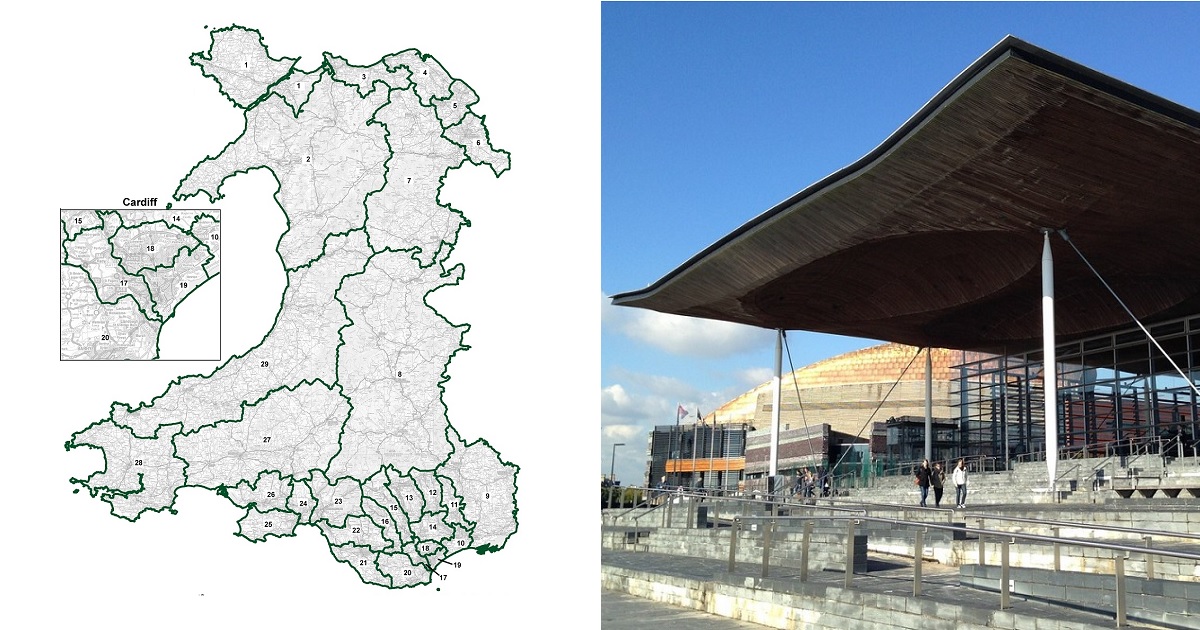‘Significant changes’ for Wales’ constituency boundaries when revised proposals are revealed tomorrow

The Boundary Commission for Wales have announced that some constituencies will have “significant changes” when they publish revised proposals for the new map of parliamentary constituencies tomorrow.
The new constituencies are due to come into force at the next Westminster General Election, but could influence the boundaries of the next Seneddd election too.
As well as publishing its proposals, the Commission will open a final four-week consultation period during which the public can share their views on the proposed constituencies.
Commenting on the upcoming publication of the revised proposals, secretary to the Boundary Commission for Wales, Shereen Williams MBE OStJ said that they looked forward to “finalising” the new map.
“Having received a record number of responses during our previous consultations, we’ve made changes to 22 of the 32 constituencies we initially proposed,” she said.
“In some cases, we’ve made significant changes, and have also proposed nine name changes compared to September 2021’s initial proposals.
“Our final consultation period is opens tomorrow so we’d encourage the public to take advantage of this one remaining opportunity to have your voice heard and make an impact before the final recommendations are published next summer.”
‘Automaticity’
The revised proposals follow the initial and secondary consultation period, and five public hearings on the Commission’s initial proposals which were published in September 2021.
Under rules set out in the Parliamentary Constituencies Act 1986 (as amended) each constituency proposed by the Boundary Commission for Wales must contain between 69,724 and 77,062 electors, with the exception of Ynys Môn, which has been deemed a protected island constituency.
The Commission has considered several factors in developing its proposals, as well as the statutory range of electors.
Geography (such as lakes, rivers, and mountains) has been an important consideration, as has current boundaries such as local authority and ward boundaries. The Commission said that they had also considered local ties, such as shared history and culture as it developed its revised proposals.
The proposals will be published on the Boundary Commission for Wales website and consultation portal at midnight on 19 October. The consultation will open immediately upon the publication of the initial proposals and will close on 15 November.
Following the final consultation period, the Commission will consider the representations received and submit its final recommendations report to parliament by 1 July 2023.
The Commission’s recommendations will be implemented by the ‘automaticity’ rule, meaning that the recommendations will no longer require Parliamentary approval.
Support our Nation today
For the price of a cup of coffee a month you can help us create an independent, not-for-profit, national news service for the people of Wales, by the people of Wales.





I hope those “name changes” respect our language and include no creeping Anglicisation.
(Other than that, let’s wait and see if this disproportionally assists one party – we know which one – more than the others)
Boundaries shmoundaries. The fact is the voice of Cymru is being reduced further in the direction of silence but on the positive side it makes independence a clear necessity and rubberstamps the critical need for an expanded Senedd.
Tory gerrymandering to bolster their chances in selected constituencies.
Note to Nation.Cymru: if you include a map (as in this news item) do please include a link to a full-sized readable version or the means to click on it to get a readable and larger version.
Only 29 constituencies shown on the map – where are the other 3 to make up the proposed 32 – or has representation been further reduced?